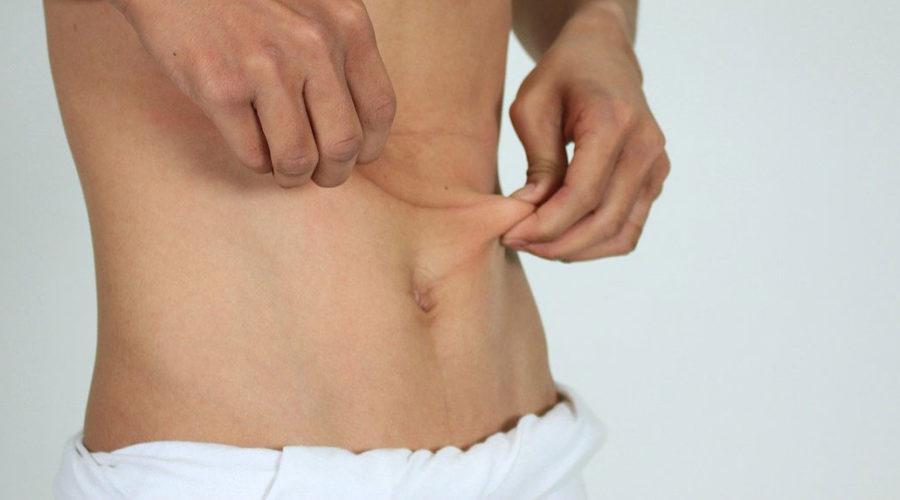Are jeans feeling a bit tighter lately? You’re not alone. Maintaining a small waistline can be challenging when you don’t have time to hit the gym every day. Who has the energy to endure relentless crunches and cardio anyway? Today we will find out some clever ways to trim your waistline without breaking a sweat with traditional exercises.

Contents
How to make your waist smaller without exercise?
If you’re looking for ways to make your waist smaller without exercise, there are several strategies you can try. While exercise is an effective way to tone and tighten your midsection, there are other lifestyle changes and habits that can help you achieve a smaller waist. Here are some tips to consider:
1. Watch Your Portion Sizes:
Keeping an eye on your portion sizes can make a big difference when it comes to waist size. Overeating can lead to weight gain, including excess fat around your midsection. Pay attention to the amount of food you’re consuming and try to keep your portions in check.
2. Make Healthy Food Choices:
Eating a balanced, nutritious diet is crucial when it comes to achieving a smaller waist. Opt for whole foods like fruits, vegetables, lean proteins, and whole grains. These foods are rich in nutrients and lower in calories, helping you maintain a healthy weight and reduce belly fat.
3. Stay Hydrated:
Drinking an adequate amount of water is essential for overall health and can also help with weight management. Staying hydrated can boost your metabolism and reduce water retention, making your waistline appear smaller.

4. Limit Sodium Intake:
Consuming too much sodium can cause water retention, leading to bloating and a larger waistline. Be mindful of your sodium intake and try to reduce your consumption of processed and packaged foods, which are often high in sodium.
5. Get Enough Sleep:
Getting sufficient sleep is important for maintaining a healthy weight and a smaller waist. Lack of sleep can disrupt your hormone levels, leading to increased appetite and potential weight gain. Aim for 7-9 hours of quality sleep each night for optimal health.
6. Manage Stress Levels:
Chronic stress can contribute to weight gain, particularly around the midsection. Find healthy ways to manage stress, such as practicing yoga, meditation, or engaging in hobbies you enjoy. Taking care of your mental and emotional well-being is essential for a smaller waist.
What Are the Risks of Carrying Excess Fat Around Your Waist?
Excess fat around your waist can pose significant risks to your health. It is essential to understand these risks and take steps to address them. Carrying excess fat, specifically visceral fat, around your waist is associated with various health problems, including:
- Heart Disease: Research indicates that visceral fat can increase the risk of heart disease, which is a leading cause of death worldwide.
- Type 2 Diabetes: Having a larger waist circumference is linked to an increased risk of developing type 2 diabetes, a chronic condition that affects the body’s ability to regulate blood sugar levels.
- High Blood Pressure: Visceral fat can contribute to higher blood pressure levels, increasing the risk of hypertension.
- Strokes: Excess fat around the waist has been associated with an increased risk of strokes, which can be life-threatening and cause long-term disability.
- Cancer: Some studies suggest a potential association between excess fat around the middle and certain types of cancer.
How to Eat for a Smaller Waist?
When it comes to making your waist smaller, what you eat plays a crucial role. By following these tips on how to eat for a smaller waist, you can support your weight loss goals and achieve a trim midsection without relying solely on exercise.

1. Focus on High-Fiber, Low-Calorie Vegetables: Incorporate vegetables such as carrots, cucumbers, broccoli, and spinach into your meals. These fiber-rich vegetables help reduce bloating around the midsection and keep you feeling full for longer periods.
2. Include Protein in Every Meal: Protein is essential for preserving muscle mass while losing weight. Make sure to include protein-rich foods like lean meats, eggs, dairy products, and plant-based protein sources in each of your meals. This will help you maintain a strong core while slimming down.
3. Choose Whole Grains: Whole grains are packed with essential nutrients and can aid in achieving a smaller waist size. Opt for foods like barley, brown rice, oatmeal, and quinoa, which retain the outer layer containing valuable nutrients.
4. Incorporate Healthy Fats: Contrary to popular belief, healthy fats can contribute to waist size reduction. Add foods like fish oil, flaxseeds, extra virgin olive oil, and avocado to your diet. These satiating fats can be incorporated into shakes or used in cooking to add flavor without excessive calories.
5. Opt for Frequent, Smaller Meals: Instead of consuming three large meals, plan to have six smaller meals throughout the day. This approach keeps your metabolism active and prevents it from slowing down. By fueling your body consistently, you can support your weight loss efforts.
Frequently Asked Questions
How can you reduce stubborn belly fat without strenuous activity?
One strategy to reduce stubborn belly fat without strenuous activity is to have a light dinner and avoid going to bed on an empty stomach. This can help in quickly reducing belly fat while maintaining a healthy eating pattern.
How many pounds can you lose per week without exercising?
A general rule of thumb is that one can safely lose up to 1% of their body weight per week without exercising. For example, someone weighing 200 pounds could lose about 2 pounds per week in the beginning of their weight loss journey. The amount of weight someone will lose mainly depends on the amount of calories consumed and burned.

Hello, I’m Ravindra. Over the years, I’ve immersed myself deeply into the world of fitness and health, transforming both my body and mind. Writing has allowed me to share my journey, insights, and expertise with those just starting out and seasoned fitness enthusiasts alike. Beyond just routines and diets, I believe in inspiring others to adopt a holistic approach to well-being.
